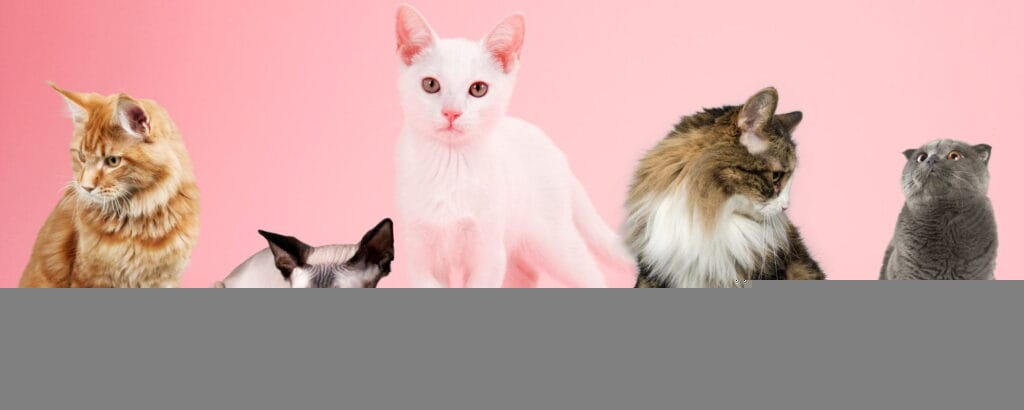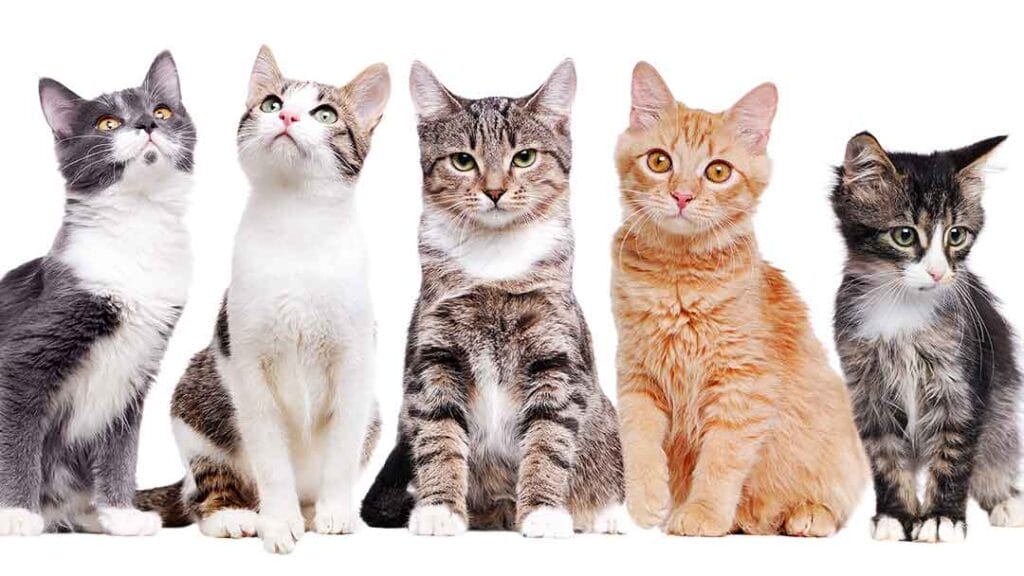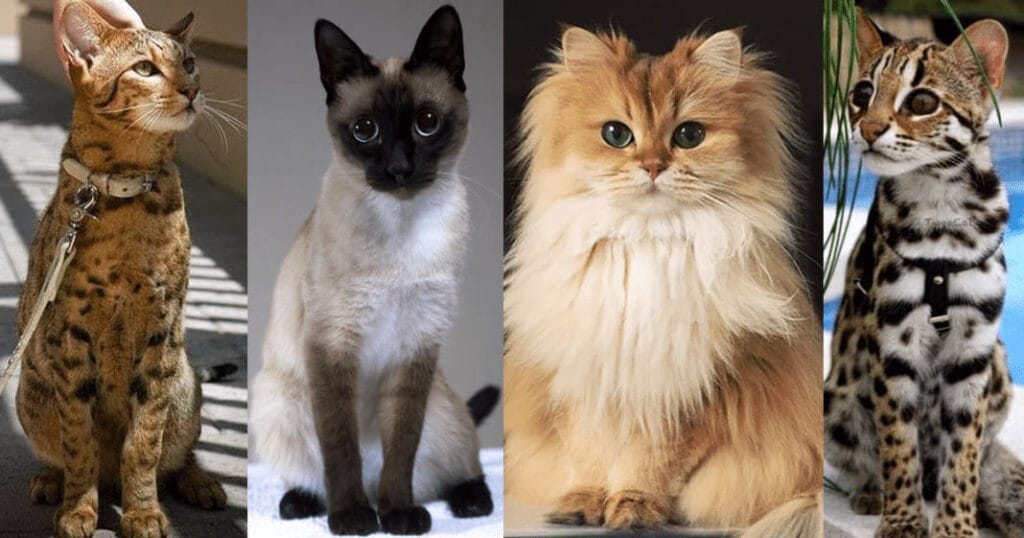They Are Not Interchangable Terms
It may be challenging for cat lovers who are not actively involved in the cat fancy to grasp the terms purebred, DSH, and tabby.

Because there seems to be such a widespread obsession with breeds, we will clarify the distinctions in semantics to make it easier for the novice cat lover to understand these expressions.
Breeds, “Purebred,” and Pedigree
Several cat registries currently recognize more than 70 different cat breeds. Only 41 cat breeds are recognized by the more established CFA (Cat Fanciers’ Association), compared to 73 by the IPCBA (International Progressive Cat Breeders Alliance). New cat breeds must be developed and registered; however, not all efforts are successful. For instance, despite TICA and IPCBA recognizing the Bengal and Savannah cat breeds, the CFA steadfastly refused to recognize cats descended from “wild stock.”
A cat must have a verifiable history that spans several generations in order to be classed as a pedigree cat. Although the term “purebred” is not used by breeders or the cat fancy as a whole, it is frequently used by the general public.
What Is a Purebred Cat?
A purebred cat is a cat whose ancestors are all of the same breed or are of multiple breeds when allowed within breed specifications. They are also known as “mackerel tabbies.

Domestic cats
Your typical, non-pedigree cat can be described in a number of ways:
- Domestic cats: This term is used on charts in veterinary offices to refer to cats that aren’t considered to be a particular breed. It is usually divided apart because some breed registries provide a category for domestic cats in some of their competitions so that you may enter and show off your wonderful cats and possibly win a ribbon. These felines are frequently referred to as DSH, or domestic shorthair, or DMH, or DLH, or domestic long hair.
- Any domesticated cat that dwells in a home is referred to as a housecat.
- Moggie: This term, which was first used affectionately to refer to cats in the UK, is now frequently used by cat owners in the United States and Canada.
- Due to the educational initiatives of groups like ACA (Alley Cat Allies), the term “alleycat” is no longer appropriate because cats are now being taken out of alleys and placed in devoted, long-term homes.
- The term “mixed breed” is most usually used when a cat exhibits identifiable traits that would imply a “purebred” cat is somewhere in its pedigree. Shelters usually have the mixed breeds Maine Coon, Persian, and Siamese.
Cat with Polydactyles
Polydactyl cats, sometimes known as “polydacts” or “Hemingway cats,” are classified as domestic cats, despite the fact that they are occasionally mistaken for a “breed.” In reality, most registries do not adhere to their requirements for polydactyl cats.
What Is a Polydthectyl Cat?
A polydactyl cat is a cat that has more than the usual number of toes. Cats usually have four toes on each back paw and five toes on each front paw. It is considered a genetic defect.
The descendants of Ernest Hemingway’s original polydactyl cats still live at his estate many years after his death because he let them carelessly procreate. A broad variety of hues and color combinations are possible with polydactyls.
Color palettes
Cats can be found in a wide range of colors and patterns, both domestic and purebred. Due to the genetic nature of these conditions, a calico mother may give birth to calico, tabby, solid, or bicolored kittens in the same litter, depending on her personal genetic history and the genetic profile of the male cat(s) that sired the litter. Red (sometimes referred to as “orange,” “ginger,” or “marmalade”), black, and white are the three basic colors geneticists refer to as the “selves” of cats.

The term “tortie with white” refers to some torties, such as the tabby, who may also have white accent marks on their fur. They are easily distinguishable from one another thanks to their whorls, stripes, and dots ( the latter generally found on their tummies). Striped tabbies are frequently called “tigers” for obvious reasons.
Common Cat Color Schemes
Cats with the oldest and most common pattern are tabbys, which are among the most well-liked. They also occasionally combine a distinctive tortoiseshell pattern with some extra tabby patterning. These cats are referred known as torbies. It should be noted that the tortoiseshell pattern predominantly weaves the hues of red and black together; white plays a very small role in the pattern.
The color patterns that are permitted for each breed to be displayed are established by breed registration. A tabby’s round bulls-eye marking on its sides identifies it as a “classic” tabby. Spotted tabbies are not only prevalent in “barn cats,” but also in breeds like the Ocicat and the American Bobtail. Tabbies may also wear white “accessories” like vests, bibs, or “boots.” Thus, they could be described as “tabby with white.”
Tuxedo cats were given the name because of the white bibs and “spats” that were applied to their glossy black coats (less flamboyantly described as white feet).
Bi-colored cats include tuxedos and different one-color plus white combinations. The colouring may be more appropriately described as bi-color rather than black and white if the colors are seen on the cat’s body in enormous blocks rather than the “bib and boots” pattern. Additional bi-colors include those with gray and white, brown and white, or red and white.
The four fundamental hues and “dilute” variants of each are available in solid-colored cats.
Tri-color cats: Due to the hereditary factors that contribute to their color patterns, tri-color cats are often exclusively female, however occasionally males do exist (about one in 3,000, according to this excellent article by Barbara French) You shouldn’t anticipate making a lot when you sell your male calico cat because they are almost always sterile, especially due to genetics.
The colors red (orange), black, and white must all be present in a row of distinct, solid-colored blocks known as calico. They might also have blocks of the tabby pattern, which would produce a cat that is incredibly colorful and beautiful. The color blocks that make up a diluted calico are as distinct as those in a standard calico, but the colors are “diluted” or “faded” versions of the original, giving them an ethereal appearance. In a diluted calico, pale orange or buff could be utilized for the red and gray (or “blue”) for the black.

Often referred to as “Tortie,” tortoiseshell: Torties are not true tri-colored cats since they frequently lack white. Instead of being made up of solid blocks of black and red, torties’ coats are a multicolored tapestry. They might conjure up images of the fall. Cats with diluted tortoiseshell coloring have softer variations on the hue.
Ears, muzzle, tail, and feet of the cat are frequently marked with “points” or even deeper shades of the body color. The first pointed cat was the Siamese, and after some time, Persian and Siamese cats were crossed to produce the Himalayan. Many more pointed cat breeds are now recognized by cat registries, including the Ragdoll, Ragamuffin, Birman, Exotic, Balinese, and Javanese. Breed registries forbid the majority of other pointed-pattern breeds. These distinctive traits, which come in a variety of colors, are usually observed in cats of mixed breeds.
READ NEXT: Calico Cats Profile

